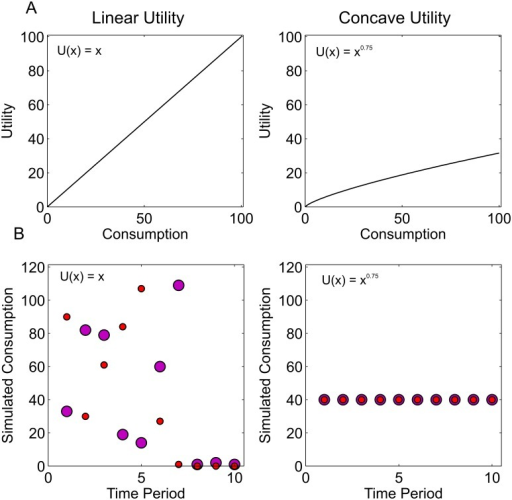Contents:
Cost drivers are the factors that cause changes in the total cost of producing a good or service. The four key steps of assigning costs to units transferred out and units in ending WIP inventory are formally presented in a production cost report. The production cost report summarizes the production and cost activity within a processing department for a reporting period.

It is very important that a company chooses the appropriate type of costing system for their product type and industry. One type of costing system that is used in certain industries is process costing that varies from other types of costing in some ways. In process costing unit costs are more like averages, the process-costing system requires less bookkeeping than does a job-order costing system. Thus, some companies often prefer to use the process-costing system. The practice of process costing is adopted by companies when they need to assign unit costs to products. When mass-produced identical units such as beverages, pharmaceuticals, and cereals are produced, calculating their cost based on process costing is used.
Conversion costs are adde… In a process costing system costs are measured upon completion of each job. A system of assigning costs used by companies that produce unique products or jobs. In the first stage of production, Coca-Colamixes direct materials—water, refined sugar, and secret ingredients—to make the liquid for its beverages. The second stage includes filling cleaned and sanitized bottles before placing a cap on each bottle. In the third stage, filled bottles are inspected, labeled, and packaged.
Process Costing: What It Is & Why It’s Important
Raw materials move through the production cycle in a continuous flow, ending with the production of identical packages of paper. This month, it completes 150,000 packages. Raw materials total $50,000, or $.33 per package.

Examples of this include the manufacture of erasers, chemicals or processed food. Process costing is used when a company consistently produces the same service. Processing units are assigned costs, which then become inputs for the next step in the chain or in the final value of the product. Since cost-accounting methods are developed by and tailored to a specific firm, they are highly customizable and adaptable.
Step #3. Determine the costs that apply:
The weighted average method is thought by some accountants to be inferior to the FIFO method because it A. Is more difficult to apply. Only considers the last units worked on.
Result in a higher unit cost for the good units produced. Result in a loss being incurred. Cause estimated overhead to increase. Units completed by a production department in the period. Summarize total costs to account for and Compute equivalent unit costs. Managers need to maintain cost control over the manufacturing process.
- Keeping track of costs and production levels can be done through process costing and job order costing.
- Explain the concept of equivalent units assuming the weighted average method is used.
- When using process costing, companies determine item cost by tracking the cost of each stage in the production process, then divide the total cost by the number of items produced.
- Direct materials totaling $20,000—$6,000 for the Mixing department, $5,000 for the Rolling department, and $9,000 for the Packaging department—are requisitioned and placed in production.
- Services related to medicine.
- Process costing is used when a company consistently produces the same service.
Material is added at the beginning of a process in a process costing system. The beginning Work in Process Inventory for the process was 30 percent complete as to conversion costs. Using the FIFO method of costing, the number of equivalent units of material for the process during this period is equal to the A.
Examples of Process Cost Accounting
Simply divide total costs to be accounted for by total equivalent units accounted for. We discuss this further later in the chapter. A process costing system is used by companies that produce similar or identical units of product in batches employing a consistent process. A job costing system is used by companies that produce unique products or jobs. Process costing systems track costs by processing department, whereas job costing systems track costs by job.
1,000 units were completed and transferred out to the Finishing department ; thus 1,000 units were started and completed during May. Identify whether each business listed in the following would use job costing or process costing. We return to Desk Products, Inc., throughout the chapter to explain how process costing systems work. A new competitor recently began producing a similar desk, and Ann is concerned about whether Desk Products’ production costs are reasonable.
These three inventory accounts are used to record product cost information for both process costing and job costing systems. However, several work-in-process inventory accounts are typically used in a process costing system to track the flow of product costs through each production department. Thus each department has its own work-in-process inventory account.
Averaging the total cost of completed beginning work-in-process inventory and units started and completed a process costing system is used by a company that over all units transferred out is known as A. Strict FIFO. Modified FIFO. Weighted average costing.
As a result, the inventory asset on the balance sheet is recorded at the most recent cost. Indirect CostsIndirect cost is the cost that cannot be directly attributed to the production. These are the necessary expenditures and can be fixed or variable in nature like the office expenses, administration, sales promotion expense, etc. This method assigns the expense of first inputs to the processes in the order of production.
Subtract the beginning Work in Process Inventory cost from the current period’s production cost. Add the beginning Work in Process Inventory cost to the current period’s production cost. Number of whole units that could have been completed if all work of the period had been used to produce whole units. Company units of product in a given period of time. Divide the total cost by the number of units to obtain the cost per unit.
Both amounts are highlighted. Which of the following statements is true regarding cost per equivalent unit? This calculation only includes variable costs. This measure is used to assign costs to units transferred out. This measure always stays the same from one month to the next regardless of different levels of production.
Use the four key steps to assign costs to units completed and transferred out and to units in ending WIP inventory for the Mixing department. Are calculated by multiplying the number of physical units on hand by the percentage of completion of the units. If the physical units are 100 percent complete, equivalent units will be the same as the physical units.

The Molding department requisitioned direct materials totaling $2,000 to be used in production. An example of how to use Excel to prepare a production cost report follows. Notice that the basic data are at the top of the spreadsheet, and the rest of the report is driven by formulas. Each month, the data at the top are changed to reflect the current month’s activity, and the production cost report takes care of itself. Figure 3.6 “Calculation of the Cost per Equivalent Unit for Desk Products’ Assembly Department” presents the cost per equivalent unit calculation for Desk Products’ Assembly department. Soap Production Company’s Mixing department shows the following information for the 1,000 units of product remaining in work in process at the end of the period.
Watch what business uses process cost system video
(i.e., direct and indirect costs) for each process, and no abnormal expenses are charged to any process. The total cost of production is divided among each process on a suitable basis. The production process is continuous for all days in the year except for regular breakdown hours required to maintain the machinery. First-in-first-out Inventory MethodUnder the FIFO method of accounting inventory valuation, the goods that are purchased first are the first to be removed from the inventory account. As a result, leftover inventory at books is valued at the most recent price paid for the most recent stock of inventory.
Use four steps to assign costs to products using the weighted average method. In a process costing system, the first step is to summarize the physical flow of units so that Units to be accounted for equals Units sold. When units are transferred from one production process to another, the journal entry will include a debit and a credit to two different Work-in-Process Inventory accounts. If normal spoilage is detected at an inspection point within the process , the cost of that spoilage should be A. Included with the cost of the units sold during the period. Included with the cost of the units completed in that department during the period.
Process costing systems require the use of work-in-process inventory accounts for each process. Thus Hershey would track production costs using separate work-in-process inventory accounts for each stage of production. At many companies, a different department handles each stage in the production process.
A fraction-of-a-cent cost change can represent a large dollar change in overall profitability, when selling millions of units of product a month. Managers must carefully watch per unit costs on a daily basis through the production process, while at the same time dealing with materials and output https://1investing.in/ in huge quantities. Using process costing, a seltzer bottling company would assign costs to each stage in the bottling process. It then totals the costs from each stage over an accounting period, dividing the overall process cost by the number of finished bottles to obtain a cost per bottle.
Product Costs Similarities Product costs consist of direct materials, direct labor, and manufacturing overhead. Differences Process Costing Job Costing Product costs are assigned to departments . Product costs are assigned to jobs. Unit Cost Information Similarities Unit cost information is needed by management for decision-making purposes. Differences Process Costing Job Costing Unit cost information comes from the departmental production cost report.

